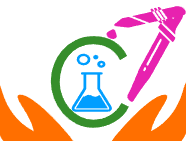Table of Contents
Introduction
Chemical analysis has profoundly shaped our understanding of the natural world. This essential discipline of chemistry involves identifying the chemical components of materials and quantifying their proportions. From ancient alchemy to modern laboratories, chemical analysis has evolved, driving advancements in various fields such as medicine, environmental science, and industrial processes. This blog post delves into chemical analysis’s history, importance, and advantages, spotlighting the pioneers who paved the way.
A Glimpse into History
The roots of chemical analysis can be traced back to ancient civilizations. Egyptians used rudimentary techniques for metallurgy and medicine around 3000 BCE. However, it was during the Islamic Golden Age that more systematic approaches began to develop. Jabir ibn Hayyan, a Persian polymath in the 8th century, is often regarded as the father of chemistry. His works laid the foundational principles for qualitative and quantitative analysis, emphasizing purification, crystallization, and distillation.
The Renaissance brought further advancements. Robert Boyle, in the 17th century, revolutionized chemistry with his meticulous experimentation and the formulation of Boyle’s Law. Antoine Lavoisier, known as the father of modern chemistry, introduced the concept of chemical elements and compounds, emphasizing accurate measurement and experimentation.
In the 19th century, they witnessed significant breakthroughs. German chemist Justus von Liebig developed organic analysis techniques, and Robert Bunsen and Gustav Kirchhoff’s invention of the spectroscope enabled the identification of elements through spectral lines. This era laid the groundwork for modern analytical methods.
The Importance of Chemical Analysis

Chemical analysis is pivotal in numerous sectors, including:
- Healthcare and Pharmaceuticals: Precise analysis ensures the efficacy and safety of medications. Techniques such as chromatography and spectroscopy are employed to identify active ingredients and contaminants.
- Environmental Protection: Monitoring pollutants in air, water, and soil is crucial for environmental conservation. Chemical analysis helps in detecting and quantifying harmful substances and guiding regulatory measures.
- Food Safety and Quality: Ensuring food safety involves rigorous testing for contaminants, additives, and nutritional content. Analytical methods help maintain quality standards and comply with regulations.
- Industrial Applications: In manufacturing, chemical analysis aids in quality control, process optimization, and material characterization. Industries such as petrochemicals, metallurgy, and electronics rely heavily on these techniques.
- Forensic Science: Analyzing evidence from crime scenes, such as blood, drugs, and toxic substances, is essential for criminal investigations and justice.
Advantages of Chemical Analysis
- Precision and Accuracy: Modern analytical techniques offer high precision and accuracy, enabling reliable detection and quantification of substances even at trace levels.
- Versatility: Chemical analysis encompasses a wide range of methods, from simple titrations to advanced spectroscopy and chromatography, catering to diverse applications.
- Rapid and Non-Destructive Testing: Techniques like spectroscopy allow for rapid analysis without altering the sample, preserving it for further examination.
- Automation and High Throughput: Advances in technology have led to automated systems capable of handling numerous samples efficiently, reducing manual effort, and increasing productivity.
- Enhanced Sensitivity: Analytical methods have evolved to detect substances at very low concentrations, which is crucial for fields like environmental monitoring and pharmacology.
Key Pioneers in Chemical Analysis
- Jabir ibn Hayyan: Often considered the father of chemistry, his works on purification, crystallization, and distillation laid the groundwork for modern chemical analysis.
- Robert Boyle: is known for Boyle’s Law, his emphasis on experimentation and accurate measurement, and his advanced chemical analysis.
- Antoine Lavoisier: Antoine Lavoisier revolutionized chemistry with the concept of elements and compounds and his meticulous quantitative experiments.
- Justus von Liebig: Developed techniques for organic analysis, influencing agricultural chemistry and biochemistry.
- Robert Bunsen and Gustav Kirchhoff: Their invention of the spectroscope was a breakthrough in the identification of elements through spectral lines.
Modern Analytical Techniques
- Spectroscopy: This technique measures the interaction between matter and electromagnetic radiation. Variants include UV-Vis, IR, NMR, and mass spectrometry. Spectroscopy is widely used for both qualitative and quantitative analysis.
- Chromatography is a separation technique that involves passing a mixture through a medium where components move at different rates. Types include gas chromatography (GC), liquid chromatography (LC), and high-performance liquid chromatography (HPLC).
- Electrochemical Analysis: Techniques like potentiometry and voltammetry measure the electrical properties of analytes, useful in determining ion concentrations and reaction kinetics.
- Microscopy: Techniques like scanning electron microscopy (SEM) and transmission electron microscopy (TEM) provide detailed images and compositional analysis at the microscale.
- X-ray Diffraction (XRD): Used for determining the crystalline structure of materials, essential in material science and geology.
Future Perspectives
The future of chemical analysis is poised for exciting developments. Miniaturization and the integration of nanotechnology promise portable and more sensitive analytical devices. Advances in artificial intelligence and machine learning are enhancing data interpretation, leading to more accurate and rapid analysis. Furthermore, the increasing focus on green chemistry aims to develop sustainable analytical methods that minimize environmental impact. Learn more
Conclusion
Chemical analysis is an indispensable tool in modern science and industry, with a rich history and a promising future. From ancient alchemy to cutting-edge technologies, it continues to unveil the mysteries of matter, driving progress in healthcare, environmental protection, and beyond. Understanding its importance and advantages underscores the pivotal role it plays in shaping a better, safer world.

